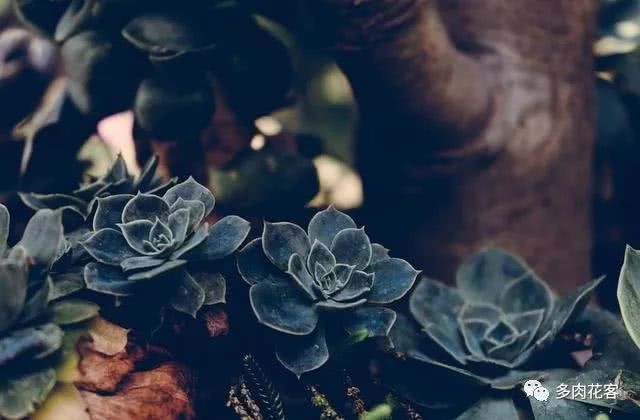What is the best cover for parsley after sowing?

Abstract: what is the best cover for parsley after sowing?
Coriander has a short growth cycle and belongs to a kind of fast-growing vegetables. it can grow many crops a year, and its unique flavor is a popular condiment in the market. Generally speaking, coriander is suitable for planting in cool climate conditions, and its optimum growth temperature is 15-20 ℃. Too high or too low temperature will affect its growth, and the germination of lettuce has relatively strict requirements on soil moisture, so many farmers will cover it with something to protect the sun and moisture after sowing. So what's the best thing to cover parsley after sowing?
Why should parsley be covered after sowing?
The germination cycle of coriander seeds is relatively long, if it is not soaked or accelerated and sowed directly, it usually takes about 20 days to germinate after sowing. During this period, it is required to keep the soil moist, and the temperature can not change too much. Too high or too low will affect the germination rate. In addition, coriander germination can not be direct sunlight, the sun is too strong, it is easy to sunburn the budding buds. In general, coriander is sown in August to September, or in spring. In this season, it is necessary to avoid sun exposure, and a thin layer of soil is covered after sowing, which can easily make the water evaporate and cannot preserve soil moisture. Therefore, mulch is needed to shade the sun and maintain soil moisture after sowing.
Which mulch is the best to choose after sowing coriander?
The mulch after coriander sowing should not only block the light and air, but also maintain the soil moisture, and the mulch should be removed in time after the coriander breaks the soil, so as not to affect the growth of coriander seedlings. In general, farmers will choose things such as straw or straw for mulching, which can cover both light and air, and will not affect the growth of coriander seedlings. Secondly, it can also cover the wheat awn, that is, the shell of the wheat after threshing, which does not need to be removed even after the coriander breaks the soil, because the coriander bud can grow from the gap of the wheat awn, and it can also be used as farm manure after the wheat awn rot in the later stage, which is easier. In addition, if you take into account the fear of parsley buds being burned by direct sunlight in the later stage, you can also build a sunshade to avoid direct sunlight while reducing soil water evaporation. No matter which mulch you choose, in order to keep the soil moist, spray water regularly until the coriander seedlings are unearthed.
In addition to the use of mulch, what other measures are there to help increase the sprouting rate of parsley?
The low sprouting rate of parsley is mainly due to the hardness of its seed shell and the difficulty of water infiltration. Therefore, the budding rate can be improved by the following measures before sowing. On the one hand, the seeds can be rubbed before sowing to remove the hard shell or mechanical damage, and then soak the seeds, accelerate germination, and wait for coriander seeds to be whitened before sowing; on the other hand, the seeds can be soaked in 40 ℃ of hot water for about half an hour, stirring several times, soaking seeds for a period of time after cooling in hot water, and then sowing seeds.
In addition, in addition to seed treatment, we should also choose relatively loose soil, irrigate thoroughly before sowing, maintain moderate soil moisture, and apply enough base fertilizer to ensure the growth of seedlings after seed germination, and time for seedlings to weed after emergence.
Coriander planting is relatively time-saving and labor-saving, because coriander is no longer topdressing after applying sufficient base fertilizer, and parsley is not prone to diseases and insect pests, simple management, short growth cycle, as long as the early seed germination is ensured, it is easy to manage during the later period.
Here is science to promote agriculture, welcome to add attention, with you to grow knowledge.
- Prev

How can farmers irrigate the terraces so high in the south?
Abstract: the terraces in the south are so high, how can farmers irrigate them? Terrace is a special crop planting pattern in southern China, and it is also a method to make full use of land for production. Rice is the most frequently planted crop. Terraces.
- Next

To achieve these two points, no matter how to raise succulent plants, they will not die.
Although most of the succulent plants do not blossom or have no gorgeous colors, they have always been loved by flower friends because of their unique charm. But many people are distressed, succulent is not easy to raise, either black rot or melt water. It's really distressing and tiring.
Related
- Wuhan Hospital Iron Tree Blooming Result Was Instantly Frightened by the Gardener Master
- Which variety of camellia is the most fragrant and best? Which one do you like best?
- What is the small blue coat, the breeding methods and matters needing attention of the succulent plant
- Dormancy time and maintenance management of succulent plants during dormancy
- Minas succulent how to raise, Minas succulent plant pictures
- What are the varieties of winter succulent plants
- How to raise succulent plants in twelve rolls? let's take a look at some experience of breeding twelve rolls.
- Attention should be paid to water control for succulent plants during dormant period (winter and summer)
- Watering experience of twelve rolls of succulent plants
- Techniques for fertilizing succulent plants. An article will let you know how to fertilize succulent plants.

